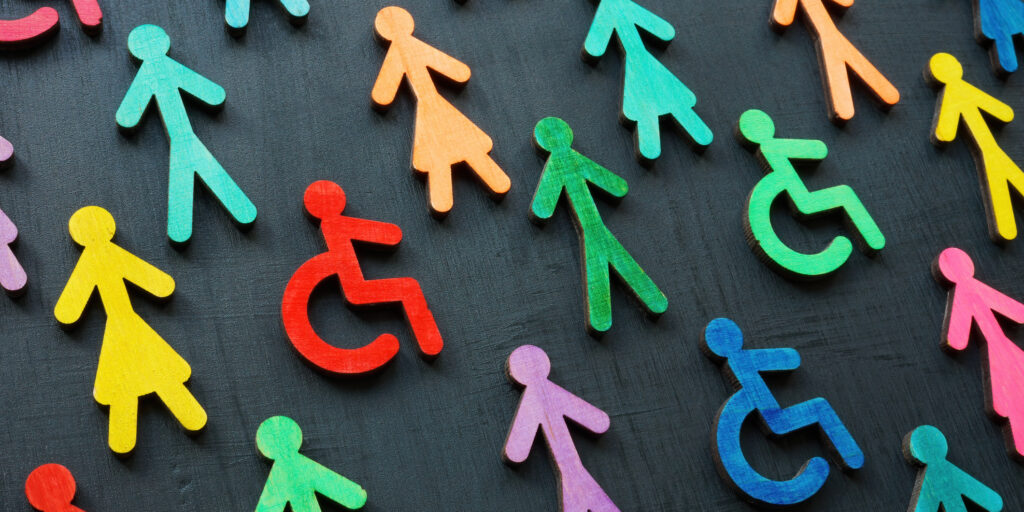
Domestic Violence Awareness Month: Know Your Risk and Resources
By Annika Tourlas | Wednesday, October 16, 2024
October marks Domestic Violence Awareness Month, an opportunity to shed light on and foster conversations about this alarming fact: People with disabilities, such as those living with neuromuscular diseases, are at significantly higher risk for domestic abuse.
According to the Centers for Disease Control and Prevention (CDC), people with disabilities are 4 to 10 times more likely to experience abuse than people without disabilities. With this heightened risk, learning how to recognize abuse and what to do about it is essential.
Defining domestic abuse

Briana Mills is a marriage and family therapist living with congenital muscular dystrophy (CMD).
Domestic abuse is a pattern of behavior used by one person to gain and maintain power and control over another person in an intimate or family relationship. It can manifest in various forms:
- Physical abuse involves intentional physical acts causing injury or trauma to another person.
- Emotional abuse includes actions or words that harm an individual’s self-esteem or psychological well-being.
- Financial abuse involves controlling a person’s ability to earn, access, or use money or other financial resources.
- Sexual abuse refers to any unwanted sexual activity initiated by using force, making threats, or taking advantage of a victim’s inability to give consent.
Barriers to communication or mobility can make people living with disabilities more vulnerable to abuse and affect their ability to report the abuse or seek help. In some cases, individuals may be dependent on their abuser for care, making it challenging to leave the abusive environment.
“The systems that we live under aren’t built for us,” says Briana Mills, a licensed marriage and family therapist living with SEPN1 muscular dystrophy, a type of congenital muscular dystrophy (CMD). Briana uses a power wheelchair and needs assistance with activities of daily living.
“We have to rely on other people to meet our basic needs. I would say, in most cases, survivors with disabilities experienced abuse from someone they trusted — a family member, a partner, a friend, or even a caregiver,” she says.
People with neuromuscular diseases often need assistance with daily tasks like cooking and cleaning, intimate tasks like dressing and toileting, healthcare needs like taking medication, and transportation, giving caregivers quite a bit of control over their well-being. Family members or others may also be involved in their financial management. This makes people with neuromuscular diseases more susceptible to various forms of abuse, isolation, and neglect.
“You always have risk,” says Eileen Carlo, a licensed mental health counselor living with Charcot-Marie-Tooth disease (CMT). She is one of the 10% of those diagnosed with CMT who experience full degeneration of the motor nerves. She uses a ventilator and has only facial and vocal muscle control.
“You have to be careful of your safety, even when you feel like you might know someone,” she says.
Recognizing domestic abuse
Abuse can look different for every person, and it doesn’t always involve physical violence. Knowing common signs can help you and your loved ones identify when abuse occurs and seek help.
Common signs of abusive behavior:
- Using your disability to shame or humiliate you
- Minimizing your disability or claiming you’re faking symptoms
- Preventing you from making your own decisions, including about working or attending school
- Controlling your finances, such as by taking your money or refusing to provide money for necessary expenses
- Isolating you by preventing or discouraging contact with friends and family members
- Threatening to abandon you or harm themselves or others
- Removing or damaging your mobility devices
- Withholding medications or caregiving
How to navigate domestic abuse with a disability

Eileen Carlo is a mental health counselor living with Charcot-Marie-Tooth disease (CMT).
Finding a way out of an abusive situation can be challenging for anyone, and people with disabilities often face additional barriers. However, it is possible with the right resources and support.
Being prepared is key. Consider potential scenarios based on your situation and develop an action plan to get to safety. Your plan should include emergency contacts, ways to get messages to trusted loved ones, local resources like women’s and family shelters, and accessible transportation methods.
After understanding her heightened risk for abuse, Eileen developed a plan that could be set in motion with a blink. “In my home, I have established a signal with my family and trusted nurses, so if I need to get taken out of the house, I use my eyes like an SOS signal,” she says. Next, a friend would be alerted to come and take her to safety.
If you are ever in immediate danger, call 911 and ask for assistance. It’s a good idea to have a device that responds to voice commands, such as a smart speaker, watch, or phone, in case you can’t dial. Emergency responders can also help guide you to local resources for domestic abuse victims.
Know your resources
Whether you’re looking for support for leaving an abusive relationship or trying to understand what an abusive situation is, turn to these online resources:
- Office of Victims of Crime: Victims with Disabilities — Links to publications, events and training, and other resources to support victims with disabilities
- American Psychological Association: Women with Disabilities: How to Identify Abuse and Get Help — Article on recognizing abuse, what to do, and how to find help
- National Domestic Violence Hotline: Abuse in Disability Communities and People with Disabilities and Domestic Violence — Information on recognizing abuse, exercising your rights when seeking help, and an accessible hotline service for domestic abuse victims
- Sanctuary for Families: The Links Between Disability and Domestic Violence — Article on being an advocate for survivors of domestic violence with disabilities and resources in the New York area
- CDC: National Intimate Partner and Sexual Violence Survey — A collection of national and state-level data on intimate partner violence, sexual violence, and stalking victimization
By fostering an environment of education and support, we can work toward dismantling the barriers that perpetuate cycles of abuse. Advocating for disability rights and protection from domestic violence is essential, not just during October but every day. Collective action and informed advocacy can empower individuals with disabilities to live free from the threat of domestic violence.
Next Steps and Useful Resources
- Read about strategies for adults with neuromuscular disease to form and nurture healthy romantic relationships.
- Find more Quest Media content about relationships.
- Stay up-to-date on Quest content! Subscribe to Quest Magazine and Newsletter.
Disclaimer: No content on this site should ever be used as a substitute for direct medical advice from your doctor or other qualified clinician.




